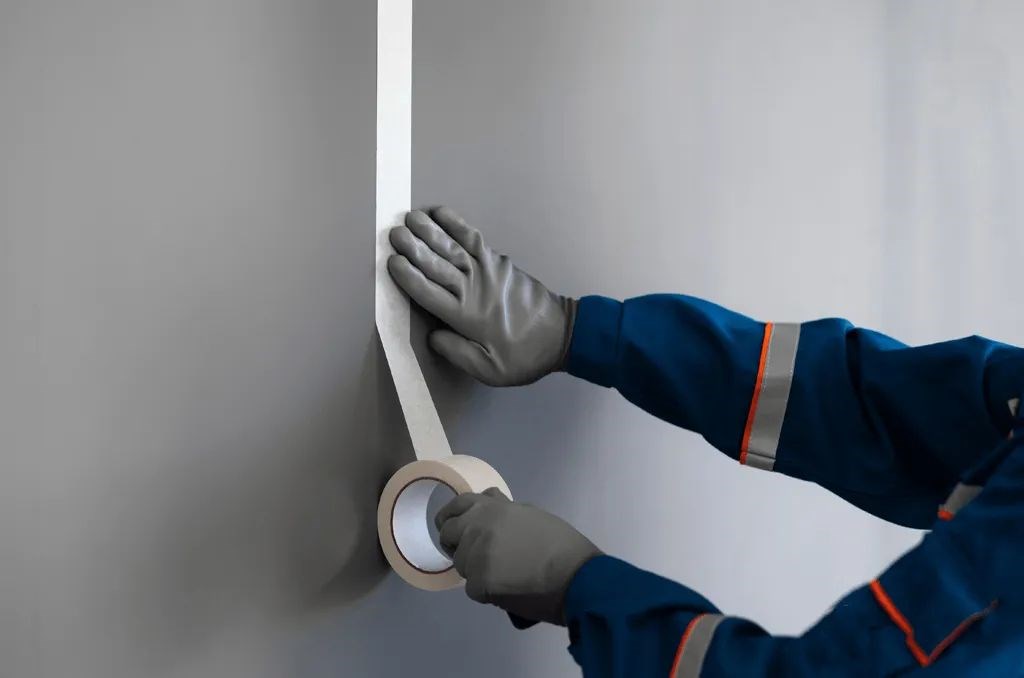A guide to masking tape
Published date: 14 October 2022

Masking tape is an essential tool, whether you’re a painter or a DIY enthusiast. It can be used to protect surfaces from paint drips, apply trim or accent colors, label surfaces with ease, and more. It’s important to know how to use masking tape correctly to get the best results. In this blog post, we’ll show you how to choose the right kind of masking tape for your project and how to use it.
What is masking tape?
Masking tape is an adhesive tape commonly used in painting, finishing and other applications. It is often employed to protect surfaces from paint or other finishes. It is typically made of a thin, easy-to-tear backing material (usually paper) and a layer of pressure-sensitive adhesive. Masking tape can be applied on a variety of different surfaces and it’s easy to remove. This tape is best used for the temporary concealment of surfaces. It’s not intended for permanent application.
How to use masking tape?
Masking tape is generally easy to use. However, there are a few things you should keep in mind:
- Always apply masking tape to clean, dry surfaces.
- Press down firmly the edges of the masking tape to ensure a good seal. This will avoid paint from seeping under the tape.
- Remove the tape carefully, to avoid damaging the surface underneath. Peel off the masking tape while the paint is still wet, to avoid peeling off any dried paint along with it.
- If any paint has seeped under the tape, use a razor blade or putty knife to carefully scrape it away.
Types of masking tape
Masking tape is available in a variety of widths, colours, thicknesses and adhesive strengths. It is mainly categorised according to the type of adhesive it uses:
- Rubber-based adhesive. This general purpose masking tape is inexpensive and provides good adhesive properties. However, it is not suitable for high temperature environments.
- Acrylic-based adhesive. Acrylic masking tape is able to resist temperature swings. It withstands both high and below zero temperatures.
- Silicone-based adhesive. This masking tape is used in applications that require heat resistance. Some varieties can withstand temperatures up to 260°C.
How to choose the right masking tape for your project
With so many different types and brands of masking tape on the market, how do you know which one to choose for your project? Start by asking yourself a few questions:
- What conditions will the tape be exposed to? For instance, outdoors applications might require a tape that can resist moisture, temperature swings and/or UV light.
- What surface will the tape be applied to? Different types of tape provide distinct adhesive strengths to different surfaces. Application to textured surfaces will require higher adhesive levels. Low-tack adhesives work best on smooth surfaces.
- How long will the tape stay applied before removal? Certain masking tapes can be removed without leaving residue up to 60 days after application. Most, however, will not.
- How important is a sharp paint edge? Some masking tapes will provide clearer edges than others.
With this information in mind, you can choose a masking tape that will help you achieve the best results!
Conro Electronics, as a leading supplier of materials and tools in the electronic manufacturing industry, offers a wide choice of masking tapes from major manufacturers such as 3M and Humiseal.
We’ll show you how to improve product reliability while increasing performance and lowering costs. Our team of technical support specialists will provide your company with dependable global supply, unrivalled efficiency, and superior technical support.
Feel free to contact us on 0208 953 1211 or send us an email to info@conro.com




Comments
There are currently no comments, be the first to comment.